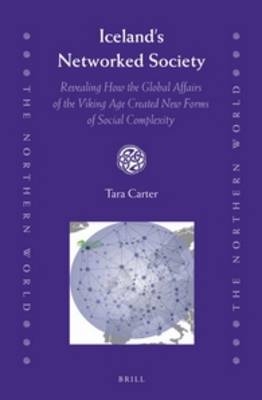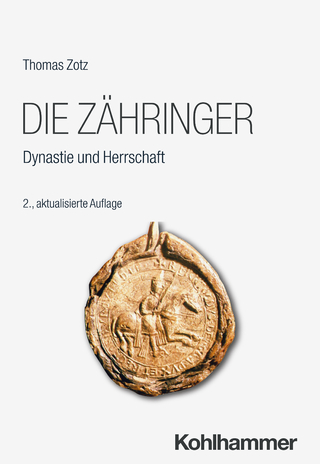
Iceland's Networked Society
Brill (Verlag)
978-90-04-28913-0 (ISBN)
Linked by the politics of global trade networks, Viking Age Europe was a well-connected world. Within this fertile social environment, Iceland ironically has been casted as a marginal society too remote to participate in global affairs, and destined to live in the shadow of its more successful neighbours. Drawing on new archaeological evidence, Tara Carter challenges this view, arguing that by building strong social networks the first citizens of Iceland balanced thinking globally while acting locally, creating the first cosmopolitan society in the North Atlantic. Iceland’s Networked Society asks us to reconsider how societies like Iceland can, even when positioned at the margins of competing empires, remain active in a global political economy and achieve social complexity on its own terms.
Tara Carter, Ph.D. (2010), University of California, San Diego is an archaeologist and recent postdoctoral fellow at Stanford University.
Contents
Acknowledgements ix
List of Figures xii
List of Tables xv
1 Examining the Process of Secondary State Development in Iceland 1
1.1 Defining a Secondary State 1
1.2 Only by Looking Far Will Things Become Clear: Situating the
Icelandic Case within a Broader Viking Age Perspective 10
1.3 The Norse in Iceland 16
2 Environmental Constraints and the Development of an Autonomous
Secondary State 28
2.1 Insular Communities and Island Environments: Autonomous
Secondary State Formation 30
2.2 The Physical Landscape 38
2.3 Land Degradation and the Norse Colonization of Iceland 40
2.4 Land Productivity in Skagafjörður 53
2.5 Discussion 63
2.6 Conclusions on Iceland as an Autonomous Secondary State 66
3 The Norwegian World System: Hegemonic Colonial Secondary State
Formation 69
3.1 Out on the Frontier: Models of Secondary State Formation in
Colonial Settings 71
3.2 The Icelandic Sagas: Sources of Evidence, Sources of Contention 76
3.3 Is the Spade Mightier Than the Pen? 81
3.4 The Ability of Text to Reflect Reality 84
3.5 The Power of the Oral Tradition 87
3.6 The Social Reality of Medieval Iceland Represented in Text and
Archaeological Remains 90
3.7 Conclusions on Iceland as a Hegemonic Colonial Secondary State 102
4 Examining the Economic Dimensions of Early Icelandic Society:
A Proposed Methodology for Multiregional Settlement Pattern
Analysis 104
4.1 Settlement Pattern Research in Iceland and Regional Network
Analysis 107
4.2 Environmental Setting of Skagafjörður 112
4.3 Research Methodology 114
4.4 Intensive Survey of Hjaltadalur and Viðvíkursveit 122
4.5 Conclusion 128
5 The Archaeological Survey of Hjaltadalur and Viðvíkursveit 129
5.1 Environmental Setting of the Research Area: Hjaltadalur and
Viðvíkursveit 130
5.2 Research Design of the Hjaltadalur and Viðvíkursveit Survey 131
5.3 The Ás Territory 138
5.4 The Hof Territory 145
5.5 The Viðvík Territory 180
5.7 General Settlement Trends for Hjaltadalur and Viðvíkursveit 235
6 From Independent Traders to Dependent Tenants: Reflections of an
Economic Landscape in Skagafjörður 239
6.1 Models for Understanding the Medieval Economy in Iceland 2406.2 Results of the Skagafjörður Landscape Project 248
6.3 Organizing the Landscape: Evaluation of the Three Proposed
Economic Models 258
6.4 Phase I: A Viking Age Economy, 870–1000/50 A.D. 259
6.5 Phase II: A Medieval Economy, 1050–1300 A.D. 269
6.6 Phases III and IV: A Secondary State Operating under an Ecclesiastical
Economy 292
6.7 Conclusion 301
7 The Formation of a Synergistic Secondary State in the Norse
Economic Territory 304
7.1 Synergistic Secondary State Formation 305
7.2 Archaeological Correlates and Application of the Synergistic
Secondary State Model 311
7.3 The Social Structure of Scandinavia 315
7.4 Social Structure and Ecology of Pre-State Iceland 319
7.5 Social Structure and Ecology of Sturlunga Age Iceland and the
Emergence of a State Society 322
7.6 Rethinking State Formation in Iceland 327
Bibliography 331
Index 363
| Erscheint lt. Verlag | 5.6.2015 |
|---|---|
| Reihe/Serie | Northern World ; 69 |
| Verlagsort | Leiden |
| Sprache | englisch |
| Maße | 155 x 235 mm |
| Gewicht | 714 g |
| Themenwelt | Geschichte ► Allgemeine Geschichte ► Mittelalter |
| Geisteswissenschaften ► Geschichte ► Regional- / Ländergeschichte | |
| Geschichte ► Teilgebiete der Geschichte ► Kulturgeschichte | |
| Geschichte ► Teilgebiete der Geschichte ► Sozialgeschichte | |
| Sozialwissenschaften ► Politik / Verwaltung ► Politische Theorie | |
| ISBN-10 | 90-04-28913-5 / 9004289135 |
| ISBN-13 | 978-90-04-28913-0 / 9789004289130 |
| Zustand | Neuware |
| Haben Sie eine Frage zum Produkt? |
aus dem Bereich


